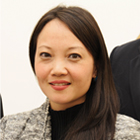Kazumi Nakamura
Solo Exhibition
September 5, 2014 – October 2, 2014
GALLERY HOURS :11:00 – 19:00
GALLERY CLOSED :
SUNDAY, MONDAY, PUBLIC HOLIDAY
RECEPTION:September 5, 2014 18:00〜20:00
LIVE TALK
Kazumi Nakamura x Mika Yoshitake (Assistant Curator, Hirshhorn Museum and Sculpture Garden)
Date:Friday September 19, 2014 19:00〜20:30
Venue:Kaikai Kiki Gallery
Cost of Admission:Free

Mika Yoshitake
Currently the assistant curator at the Hirshhorn Museum and Sculpture Garden, Mika Yoshitake holds degrees in art history from UC, Berkeley and UCLA, completing her Ph.D. at the latter in 2012. Also in 2012, she curated and organized the group exhibition “REQUIEM FOR THE SUN: THE ART OF MONO-HA” at BLUM & POE in LA. The exhibition receieved the AICA award for Best Show at a Commerical Gallery and has led to a boom of interest in post-war Japanese art.
Message From Mika Yoshitake
I am very honored to conduct a public dialogue with Kazumi Nakamura. Throughout my study of Mono-ha and having worked on Takashi Murakami’s retrospective at MOCA LA, I had always been curious about the period that marked the generation of artists (unproductively referred to as “Post-Mono-ha”) in the 1980s, and despite the post-medium condition, the theoretical strains surrounding the emergence of “New Painting” in Japan. Having learned that Nakamura had studied with Enokura Kōji, a pivotal figure for Mono-ha, I’d like to learn how and whether the latter’s core principles on relationality translated into Nakamura’s own practice and early concept of “differential images” in particular, in which meaning is essentially defined through a relational mode of operation wherein images are activated by pointing to something other than themselves.
I am also very interested in Nakamura’s conceptualization and operation of key terms in his painting practice that distinguish him from concurrent American practices in the 1980s. This era is marked by its decisive epistemological break with modernism, in which any reference to authenticity or immediacy of expression had become fraudulent, and expressionism itself had become meaningless. Nakamura’s work engages closely between, but productively outside the major division between neo-conservative pastiche and postmodern appropriation art that dominated the period. Thus, I’d like to hear Nakamura’s own counter-narrative, experiences and challenges in Japan’s cultural zeitgeist amidst the context of the bubble economy, the rise and fall of corporate industry, and the institutional structures of art, design and architecture. Finally, I am very drawn to the striking peculiarity and hidden power in his work, his artistic theories that are both personal and political, and philosophical approaches to painting as a form of “social semantics.” I look forward to the exhibition and meeting him in person very much!
-
More
Kazumi Nakamura Solo Exhibition

-
INTERVIEW

-
Live Talk Report: Kazumi Nakamura x Mika Yoshitake
